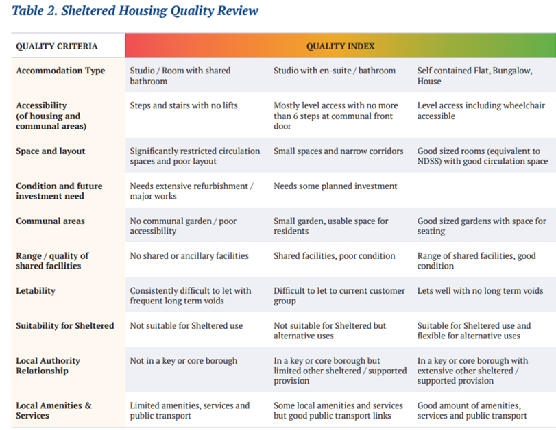Investing in existing specialist housing: The importance of quality and suitability standards
The recent report published by the All-Party Parliamentary Group on Housing and Care for Older People, titled ‘Regeneration of Outdated Sheltered Housing’, shines an important light on the quality and suitability of aged older people’s housing. Whilst there has been a welcome focus on design standards for new build housing, investment is also needed in existing stock to ensure that homes are accessible, warm and desirable.
Metropolitan Thames Valley Housing (MTVH) is a national housing association that manages 60,000 homes. Of these, 3,300 are homes for older people and 2,400 are supported housing units. We have a strategic aim to deliver new older people’s and supported housing; homes that provide the right foundation from which residents can thrive. Equally as important, is investment in our existing stock.
Whilst building new homes and investing in existing stock, we must recognise that some accommodation that has been designated as specialist housing is not fit for the future. Some properties are incredibly small, are poorly accessible and may have communal areas that would not meet the design aspirations that we have today.
In determining suitability and viability, it is important to use a range of metrics and criteria. For sheltered and supported housing, the suitability of accommodation to meet the needs of the residents is key. At MTVH, we have designed criteria that allows us to review our existing older people’s and supported housing stock against a range of criteria. The intention of this criteria is to allow us to prioritise investment, development and disposal decisions using metrics related to suitability for the intended residents alongside traditional asset management metrics such as Net Present Values (NPVs).
Our quality index, shown in the table below, sets out metrics intended to inform whether existing stock is suitable for older people’s or supported housing. Measuring schemes and homes in this way allows us to set a minimum benchmark for our homes and prioritise investment, development or disposal where this is needed. These metrics are analysed alongside finance information, voids data, history of repairs and planned investment needs. In the asset review methodology that we have developed, suitability and quality are given a high weighting, reflecting the importance of suitability for these homes.

Understanding our stock, recognising that some homes need investment, is just one step in the journey to improving accommodation options for older people and those needing support. We were pleased to give evidence to the APPG and, as is highlighted in the subsequent APPG report, funding to improve existing stock will be critical if homes are to be refurbished and remain affordable.
It is encouraging to see the sector coming together with a clear evidence base to advocate for capital investment. Our homes need to be great places for people to live at all ages and with a range of support needs. New homes are one way of achieving this. Investing in our existing homes is just as key.
For more information on the ‘APPG Inquiry: Regeneration of Outdated Sheltered Housing’ and its recommendations, visit: /Re-HAPPI
Be sure to join Claire Wise and other experts for the upcoming HAPPI Hour webinar titled ‘Regenerating outdated sheltered housing: Lessons from the APPG Inquiry’, taking place on 15th October 2024.
MTVH are proud to be a corporate sponsor and support the work of the Housing LIN

Comments
Add your comment